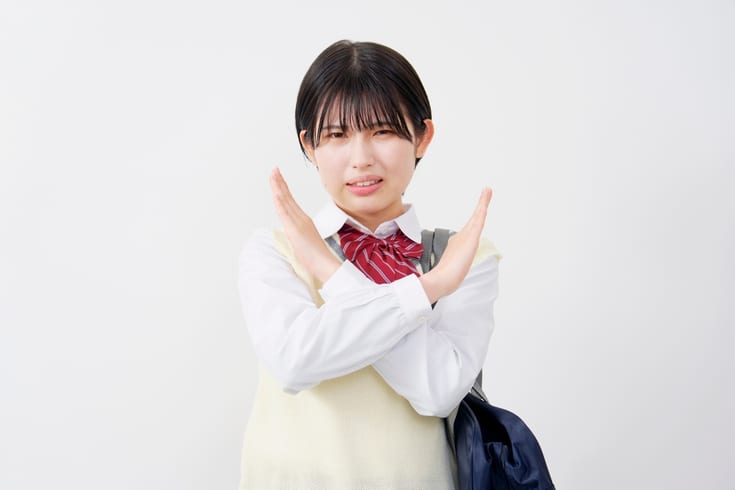Explaining YouTube's Policy on Children: What Happens to Age-Restricted Content?

There are three types of ‘terms’ on YouTube: Terms of Service, Community Guidelines, and various policies.
Among these, YouTube’s Community Guidelines are akin to ‘traffic rules’ that dictate behavior on YouTube. It’s important to be cautious as violating these guidelines could potentially result in the suspension of your channel or account.
In this article, we will focus on YouTube’s policy regarding child safety and explain the YouTube terms that YouTubers and VTubers should be aware of.
What is Prohibited Content on YouTube?
Content prohibited by the YouTube Community Guidelines can be broadly divided into five categories. If it is determined that these guidelines have been violated, there is a possibility that your channel or account may be suspended.
The five categories are:
- Spam and deceptive practices
- Sensitive content
- Violent or dangerous content
- Regulated goods
- Misinformation
Related article: Under what circumstances can a YouTube channel or account be suspended? Explaining the guidelines
Furthermore, even if the content does not violate the community guidelines, age restrictions may be imposed if the content is deemed inappropriate for all viewers.
What is “Sensitive Content” as Defined by YouTube?

YouTube, with its large number of underage viewers, has shown a strong commitment to protecting minors, particularly when it comes to “sensitive content”. This “sensitive content” is divided into categories such as “child safety”, “thumbnails”, “nudity and sexual content”, “suicide and self-harm”, and “vulgar expressions”, with policies provided to serve as criteria for determining what content is prohibited.
Policy on Child Safety
The “Policy on Child Safety” prohibits content that endangers the minds and bodies of minors under the age of 18. Specifically, the following are prohibited:
- Sexual objectification of minors
- Harmful or dangerous acts involving minors
- Causing mental distress to minors
- Content disguised as family-friendly
- Online bullying or harassment involving minors
Item 1 includes content that sexually depicts minors and content containing child pornography.
Item 2 includes content where minors are involved in dangerous acts and content that incites minors to dangerous acts.
Item 3 includes content that involves minors in adult topics and content that mimics parental abuse.
Item 4 includes content that, while targeting minors and families, contains themes such as sexual themes, violent acts, and obscene themes that are not suitable for minor viewers.
Item 5 includes content that targets individuals for harassment or contempt, content that discloses personal information such as email addresses and bank account numbers, content that records others without their consent, content that includes sexual harassment, and content that incites others to bully or harass.
Furthermore, even if content featuring minors does not violate the policy, some features of the entire channel and individual videos may be disabled, and posting of content featuring minors that falls under the following is prohibited:
- Content filmed in private places such as personal bedrooms and bathrooms
- Content where minors attempt to contact strangers, perform online dares or challenges, or discuss adult topics
- Content that showcases activities that draw inappropriate attention to minors
- Content that discloses personal information of minors
Therefore,
Videos of minors involved in provocative, sexual, or sexually suggestive acts, challenges, pranks (such as kissing or molestation), videos of minors performing dangerous stunts, using weapons or explosives, using regulated substances such as alcohol or nicotine, and videos that depict inappropriate acts such as using syringes in family-friendly animations tagged as “for children” or set to “yes, it’s for children” in viewer settings, are prohibited.
Furthermore,
It is also prohibited to give minors money, praise, high ratings, or any other incentives to make physical contact with others, to promote videos of content that sexually depicts minors or content involving harassment by minors, and content that incites dangerous acts to minors even if minors are not depicted, so caution is necessary.
This policy applies to YouTube services and features such as videos, video descriptions, comments, stories, community posts, live broadcasts, playlists, etc., and also applies to external links within the content, including clickable URLs and verbal invitations to external sites within videos.
Also, content such as “content where adults are performing dangerous acts that can be easily imitated by minors”, “content that is for adults but can be easily mistaken for family-friendly”, and “content that includes inappropriate language for younger viewers (explicit sexual expressions or offensive expressions)” may be subject to age restrictions, even if they do not violate the policy, if they are not suitable for viewers under the age of 18.
Related article: What are the key points of YouTube’s terms of use? A lawyer explains what to watch out for when posting entertainment videos
Policy on Thumbnails
The “Policy on Thumbnails” prohibits thumbnails and other images (banners, avatars, community posts, and other YouTube features containing images) that violate the community guidelines. Specifically, the following are prohibited:
- Pornographic images
- Images intended for sexual acts, use of adult toys, sexual preferences, or other sexual satisfaction
- Nudity (including genitals)
- Images depicting sexual objectification against the person’s will
- Violent images intended to shock or disgust
- Graphic or unpleasant depictions such as bleeding or obvious fractures
- Images containing vulgar or blasphemous words
- Thumbnails that mislead viewers, making them think they can view content not included in the video
These are some examples.
Even if it does not violate the community guidelines, thumbnails that may not be suitable for all viewers may be age-restricted or deleted. In making this judgment, the following are considered:
- Whether the thumbnail focuses on the chest, buttocks, or genitals
- Whether the poses or clothing of the personalitys are intended to arouse sexual excitement in the viewer
- Whether the thumbnail focuses on images of violence or cruelty
- Whether it contains vulgar expressions, or text written with the intention of shocking or disgusting viewers
- Whether the title, description, tags, etc., indicate an intention to shock or disgust viewers
These factors are taken into account.
Policy on Nudity and Sexual Content
The “Policy on Nudity and Sexual Content” prohibits explicit content intended to provide sexual gratification. Specifically, it does not allow:
- Depictions of genitals, breasts, or buttocks, whether clothed or unclothed, intended for sexual gratification
- Depictions of pornography, sexual acts, or sexual preferences intended for sexual gratification
Content including “masturbation”, “fondling or groping of genitals, breasts, or buttocks”, “nudity or partial nudity intended for sexual gratification”, “non-consensual sexual acts or sexual objectification against the person’s will”, “exposure accidents of celebrities or leaked nude photos”, and similar content is considered a violation.
Even if the content does not violate the community guidelines, age restrictions may be imposed or thumbnails may be removed for sexual content that may not be suitable for all viewers. In making this judgment, the following will be considered:
- Whether the video focuses on clothed or exposed breasts, buttocks, or genitals
- Whether the poses of the personalitys in the video are intended to arouse the viewer sexually
- Whether explicit or obscene language is used in the video
- Whether sexual images or sounds are blurred or unclear
- Whether sexual images or sounds are short or long in the content
These factors will be taken into account.
Policy on Suicide and Self-Harm
At YouTube, we believe it’s important to raise awareness and understanding of mental health. Therefore, we allow content that shares personal stories about depression, self-harm, and other mental health issues. However, our “Policy on Suicide and Self-Harm” prohibits content that promotes or glorifies suicide or self-harm, content that shocks or discomforts viewers, and content that poses significant risks to viewers. Specifically, the following are not permitted:
- Content that encourages or glorifies suicide or self-harm
- Descriptions of methods of suicide or self-harm
- Content related to suicide or self-harm targeting minors
- Graphic images of self-harm
- Footage of the bodies of suicide victims
Even if content does not violate our Community Guidelines, it may still be subject to age restrictions if it is not suitable for all viewers. This includes content intended for “education, documentaries, science, art”, content “in the public interest”, content that is “sufficiently blurred and does not detail methods or show footage of suicide or self-harm”, and “detailed descriptions of methods, locations, and landmarks related to suicide or self-harm”.
Policy on Vulgar Expressions
Under the “Policy on Vulgar Expressions”, even if there is no violation of the community guidelines, if the language is inappropriate for those under 18, age restrictions may be applied, content may be removed, or a violation warning may be issued to the channel. This judgement is based on:
- The use of explicit sexual expressions or narrations
- The use of excessive profanity in the video
- The use of extremely offensive expressions or phrases suggesting sexual content in the video title, thumbnail, and associated metadata
- The use of excessive sexual audio
These are the elements that form the basis of the judgement.
Examples of content that may be subject to age restrictions include “videos showing road rage or long bouts of verbal abuse with extremely offensive expressions”, “videos focusing on the use of offensive expressions, such as compilations or clips taken out of context”, and “videos capturing violent confrontations with extremely offensive expressions flying around, or videos containing extremely offensive expressions to convey violence”.
About YouTube’s Age Restrictions

What impact does setting an age restriction on content have?
Viewing Age-Restricted Content
When an age restriction is set on content, viewers under the age of 18 and those who are not logged in cannot view the age-restricted videos. Even with other third-party tools, you cannot watch videos on YouTube that have age restrictions. Also, even if the video is embedded on another website, if you click on a video with an age restriction on YouTube, you will be redirected to YouTube or YouTube Music, and you can only watch the content if you log in and confirm that you are over 18.
In other words, even if the video is displayed on another website, the system is designed so that only appropriate viewers can watch videos posted on YouTube.
Age Restrictions and Tipping Features
The tipping feature, which allows viewers to send money to the broadcaster using the chat function, includes the following three features on YouTube:
- Super Chat
- Super Stickers
- Super Thanks
Super Chat is a tipping feature used during live broadcasts and premieres, and by sending a Super Chat, viewers can highlight their own comments.
Super Stickers is a tipping feature used during live broadcasts and premieres, where you can send stickers (stamps).
Super Thanks is a tipping feature used for posted videos, where viewers can highlight their own comments in the comment section.
While all of these features are popular with viewers and serve as valuable sources of revenue for broadcasters, they cannot be used on private, unlisted videos, or videos aimed at children or with age restrictions. Therefore, if a video is determined to be for children, you must give up on income from tipping.
Age Restrictions and Monetization
Even if a video has an age restriction, it can still be monetized through advertising. However, since many advertisers prefer to place ads on family-friendly content or content without age restrictions, videos with age restrictions may see a decrease or even a loss of ad revenue.
Furthermore, under the Children’s Online Privacy Protection Act enacted in the United States in October 1998, website operators and online service providers who collect, use, and disclose personal information from children under the age of 13 are required to notify and obtain consent from the child’s parents. In September 2019, YouTube and its operating company, Google, were sued by the Federal Trade Commission (FTC) in the United States for violating this law, but they settled by paying a settlement of $170 million.
In response to this settlement, YouTube has restricted some features, such as personalized ads that display ads based on viewer information, on children’s videos and channels on YouTube. These features are based on the premise that YouTube will collect personal information from the viewer, who is a child.
Therefore, if a video distributed on YouTube is determined to be for children, the advertising revenue, which is the largest part of YouTube’s monetization, may significantly decrease.
Summary: Consult a Lawyer for YouTube Legal Checks
If you are deemed to be violating the Community Guidelines, your channel or account may be suspended. Even if you are not violating the Community Guidelines, age restrictions may be imposed. Both are serious issues for monetization, so you must be careful.
Related article: A Lawyer Explains Common Violations of YouTube’s Terms of Service
Introduction to Our Firm’s Measures
Monolith Law Office is a legal office with high expertise in both IT, particularly the internet, and law. In recent years, we have been handling many advisory cases for YouTubers and VTubers, who are becoming popular online. The need for legal checks in channel management and contract-related matters is increasing. At our firm, lawyers with specialized knowledge are taking measures. Please refer to the following article for details.
Areas of practice at Monolith Law Office: YouTuber & VTuber Legal Affairs
Category: Internet





















